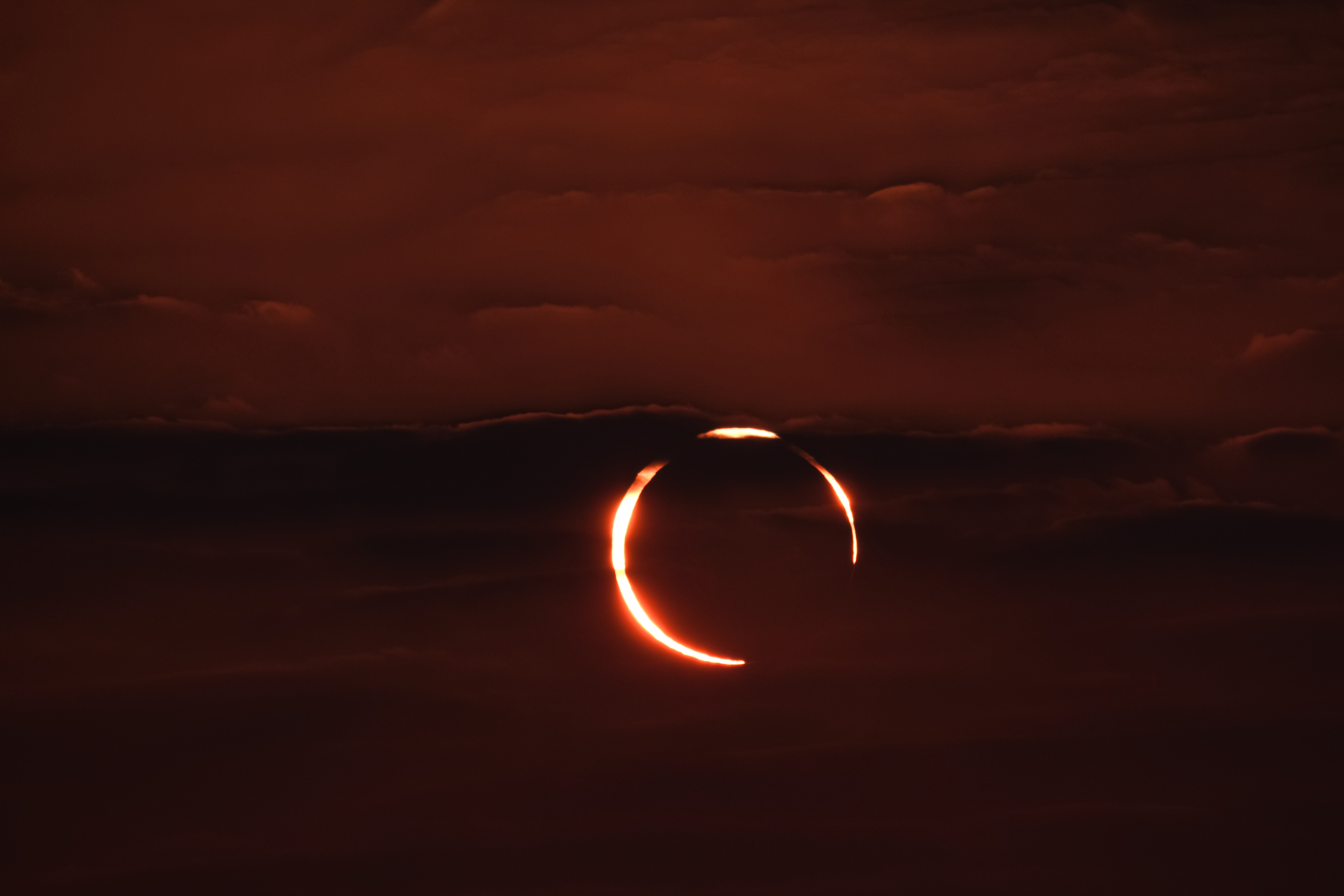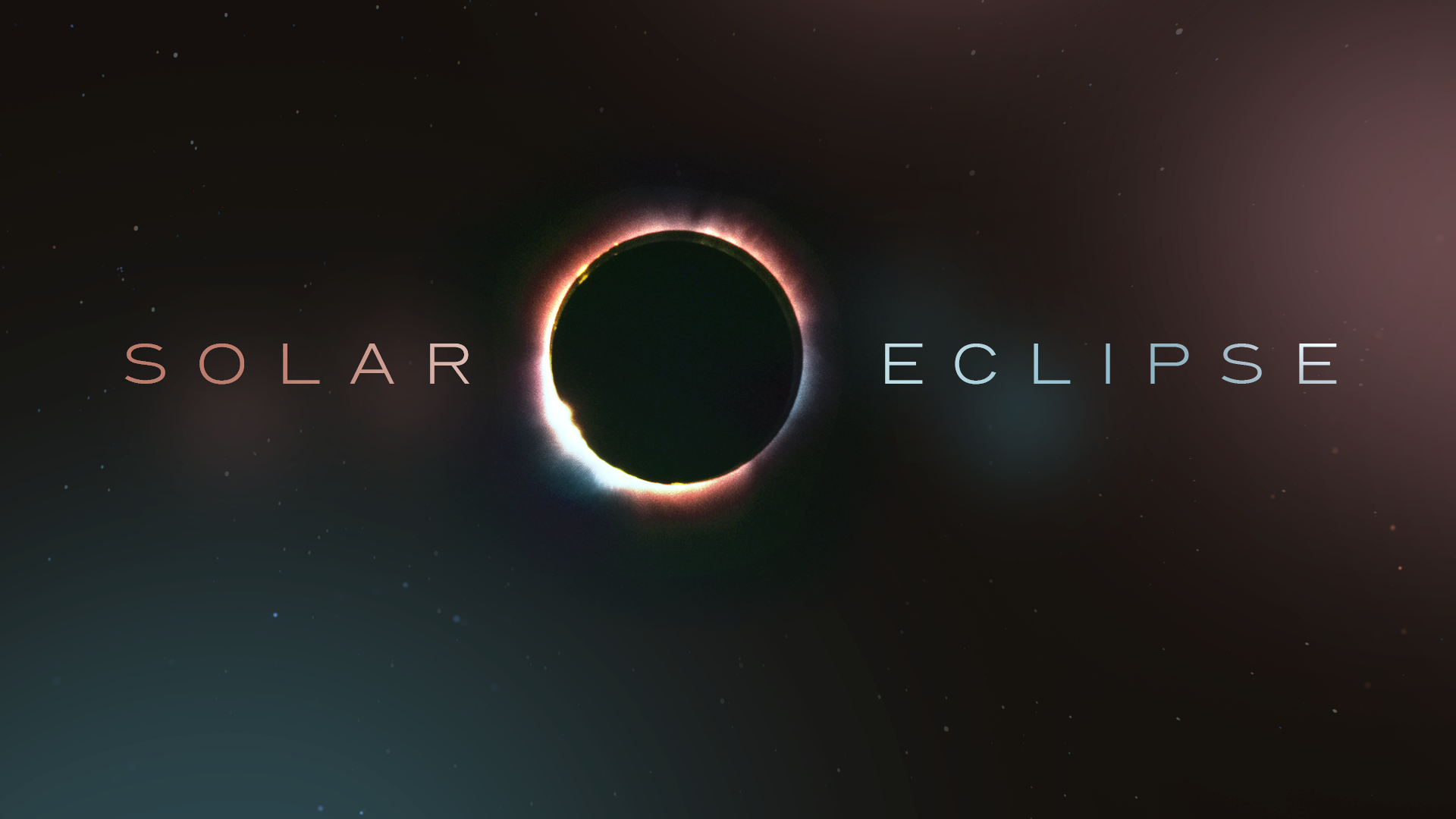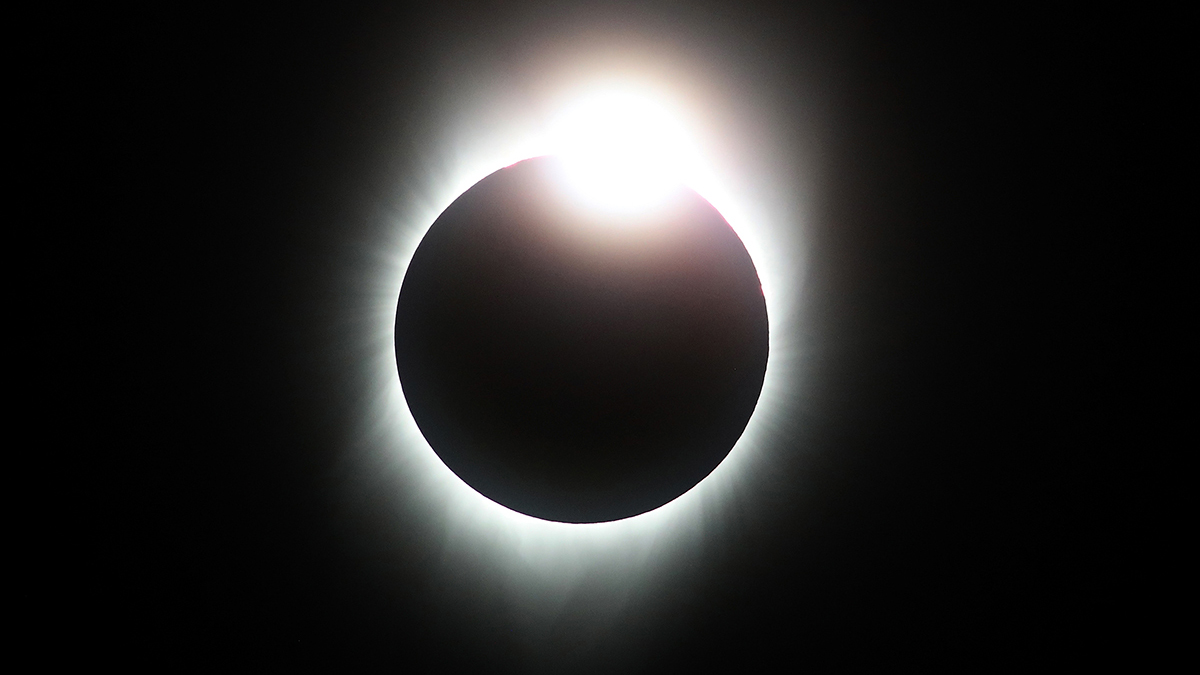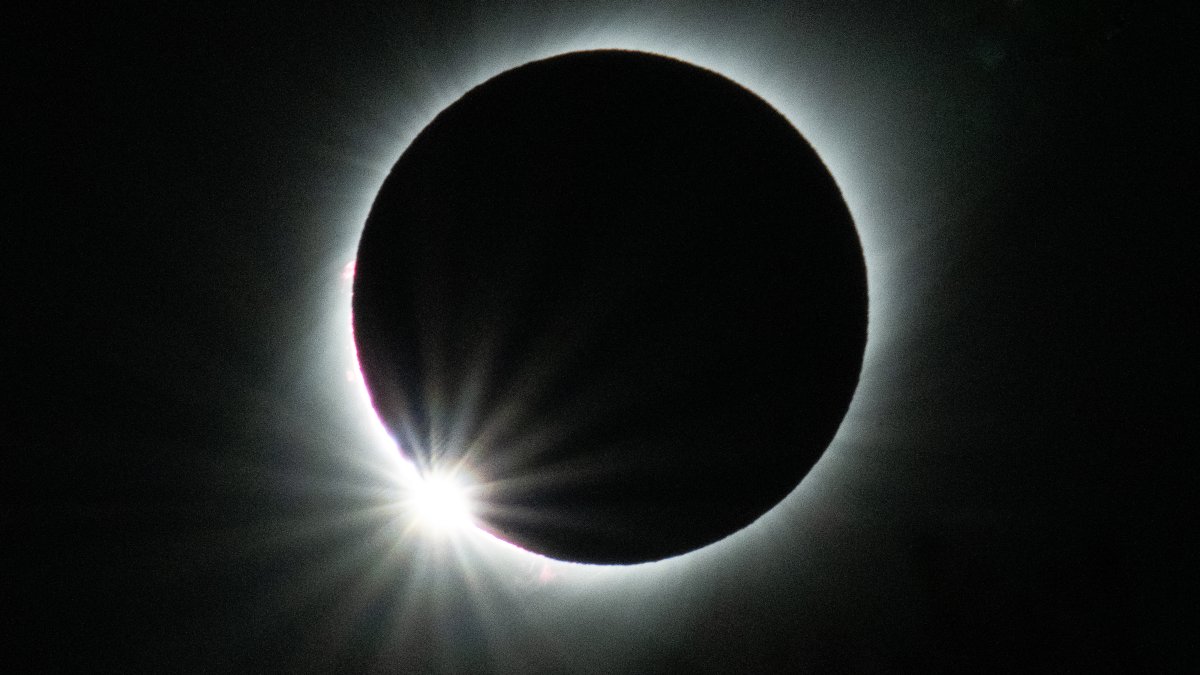What to Know
- A solar eclipse will occur over North Texas for several hours on April 8, 2024. The partial eclipse will begin at 12:23 p.m. and end at 3:02 p.m.
- Totality will last only minutes, from about 1:40 p.m. until 1:44 p.m., depending on location.
- Another total solar eclipse won't occur over the United States until 2044 and the National Weather Service says there won't be another in our region until 2317.
We're all hoping for clear skies over North Texas for the total solar eclipse on April 8, but it's looking more and more like we won't be so lucky.
Clouds can play a vital role in what you see and can't see during a total solar eclipse, but not all clouds are created equal. Different types of clouds can have a different kind of influence on your viewing chances.
Total Solar Eclipse
Get DFW local news, weather forecasts and entertainment stories to your inbox. Sign up for NBC DFW newsletters.
For Monday's eclipse, high clouds are expected to stream into North Texas. High clouds can obscure the sun, diminishing the viewing experience. However, since high clouds are typically thin and fairly transparent, many aspects of the eclipse will still be visible.
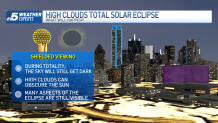
There is a potential for some low clouds to arrive across parts of the area. Low clouds will make viewing the eclipse harder, especially if they are stratus clouds.
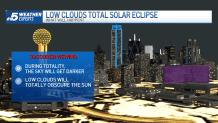
Temperatures are also impacted during an eclipse. During October's annular eclipse, the temperature at DFW Airport dropped 3 degrees during the eclipse. The temperature drop is most pronounced in areas with clear conditions, low humidity and light winds. A dip of anywhere from 1 degree if it's cloudy, and up to 8 degrees if it's clear, calm and dry.

